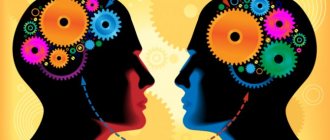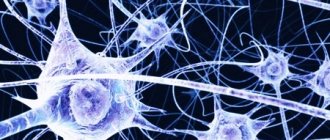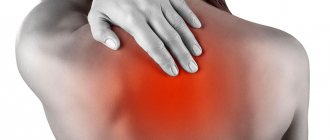21.05.2013
Maltseva Marina Arnoldovna
Head of the consultation department - neurologist, specialist in the field of extrapyramidal pathologies, doctor of the highest category
Shabunina Ekaterina Mikhailovna
Neurologist, category 2
The human brain is the crown of development of human nature, allowing us to develop and transform our own lives in accordance with our goals. We owe most of the body functions responsible for our life to the work of the central nervous system. The human brain is an incredibly complex organ that leads to the coordinated functioning of almost all systems in the body. not to mention the higher nervous activity responsible for cognitive skills and thought processes. Unfortunately, a fast pace and far from the healthiest lifestyle slowly undermine the body, depleting its reserves and compensatory mechanisms. Today, the world faces an acute problem associated not only with high morbidity, but also with disability and even mortality from cardiovascular diseases. Among such diseases, organic brain damage of an ischemic and hemorrhagic nature is in the first place. It is important to note that despite the significant preponderance in the morbidity structure of people in the older age group, namely 45 years and older, organic brain damage can also occur in children.
A brief excursion into the anatomy of the central nervous system
The human brain is a complex organ responsible for the functioning of the entire organism. There is a clear hierarchy in the structure of the brain, which allows the entire body to work effectively. The central nervous system can be divided into several main parts:
- The cerebral cortex is responsible for higher nervous activity, i.e. thought processes, speech, memory, writing, hearing and many other functions.
- Subcortical structures that form the midbrain. The midbrain is responsible for the primary reflex units and the formation of unconditioned reflexes.
- The bridge is a connecting link between all parts of the central nervous system and the cerebral cortex.
- Cerebellum. It is located in the lower occipital part of the head and is responsible for human coordination in space.
- The medulla oblongata connects the brain with the spinal cord and is its continuation. The medulla oblongata contains vital centers: vasomotor and respiratory.
How many neurons are there in the brain of animals?
According to Herculano-Housell, the human brain is very similar to the brains of other primates, with one difference: we have many more brain cells, which require enormous amounts of energy to fuel and maintain.
According to experts, approximately 25% of all energy goes specifically to supporting these cells.
If we compare the number of neurons in the human brain and other representatives of the animal world, the difference looks simply huge. So how many neurons are there in the brains of other animals?
Fruit fly – 100 thousand neurons
Cockroach – 1 million neurons
Mouse – 75 million neurons
Cat – 1 billion neurons
Chimpanzee – 7 billion neurons
Elephant – 23 billion neurons
What is brain damage?
Organic brain damage is primarily a symptom of a disease, manifested by disruption or loss of a number of functions as a result of the pathogenic effect of some factor on brain tissue. The etiology of brain damage can be very diverse, and this will be discussed in more detail later in the article. Organic damage means that brain cells - neurons - are exposed to a variety of influences, which lead to the formation of dystrophic processes inside neurons and disrupt their functional activity. In the most serious cases, neurons simply undergo first necrobiosis and then necrosis, i.e. are dying. The death of a large number of neurons localized in a single anatomical space leads to the loss of one or another function in the body of the affected person, and the identification of a disturbed function allows specialists to understand in which part of the brain the catastrophe occurred - this is called topical diagnostics. Symptoms of organic brain damage in children manifest themselves differently than in adults, since the full activity of the higher nervous system has not yet been formed. Children may experience delays in mental, mental and physical development, unstable mood and behavioral abnormalities.
Pathogenetic mechanisms of neuronal damage
A number of mechanisms of different nature can lead to organic damage to the brain. This pathological condition can be provoked by both external and internal factors, and this must be taken into account, since therapeutic measures, depending on the pathogenetic type of development of damage to brain neurons, will differ radically.
Violation of energy supply
The most common pathogenetic variant of brain damage is associated with an imbalance between the need of neurons for energy and its entry into the cell. Energy deficiency can develop due to insufficiency:
- Nutrients in the victim's body, for example as a result of hypoglycemia, when there is not enough glucose in the blood;
- Oxygen, which causes a condition such as hypoxia. Brain hypoxia causes damage to nervous tissue and often occurs in acute ischemic or hemorrhagic cerebrovascular accidents. In children, brain hypoxia can develop in the antenotal period and during childbirth, which leads to anoxic brain damage in the child.
- When the concentration of potassium, calcium, sodium and chlorine ions increases or, conversely, excessively decreases, transmembrane proteins may malfunction, which also entails energy deficiency inside the cell.
It is worth noting that energy deficiency leads to rapidly progressive damage to brain tissue and within 5-7 minutes, in the absence of sufficient oxygenation, neurons begin to experience acute hypoxia and die. Damage to the blood vessels of the brain has the following symptoms:
- The patient notes memory impairment;
- There is a decrease in vision and hearing;
- The synthetic activity of the brain slows down;
- When performing angiography of cerebral vessels, multiple stenoses of cerebral vessels can be detected;
- MRI of the brain shows dystrophic disorders and a decrease in the volume of the cerebral cortex.
All of the above symptoms are signs of systemic atherosclerosis, which affects most older people. Atherosclerosis leads to the formation of discirculatory encephalopathy.
Traumatic injuries
Injuries are always associated with mechanical damage to the brain and the subsequent development of edema, which leads to an increase in intracranial pressure. Since the brain is located in the cranium and literally floats in the cerebrospinal fluid - intracerebral fluid, the consequences of blows and bruises become serious. Despite. The cerebrospinal fluid plays a protective and shock-absorbing role; with the development of a brain contusion, an increase in intracranial pressure occurs, since the fluid is not physically compressible. Brain cells are exposed to excessive pressure and begin to die. Brain tissues occupy up to 96% of the volume of the cranial cavity, which makes this organ very sensitive to changes in intracranial pressure.
It is very important to note that quite often injuries are accompanied by internal hemorrhage, which can lead to the formation of an extensive hematoma and displacement of the brain. Dislocation of the brain leads to wedging of its subcortical structures into the foramen magnum, which inevitably leads to the death of neurons located in the nuclei of the vasomotor and respiratory centers, without which the life of the victim is impossible.
Infectious
Brain damage can be caused not only by physical factors. But also biological. Conditions such as meningitis, encephalitis, and ventriculitis can significantly impair the functional activity of the brain.
- Meningitis is an inflammation of the lining of the brain. Etiological factors can be very diverse, so the brain can be affected by many bacterial and viral diseases. Inflammation of the membranes of the brain can occur primarily through direct infection through the wound gate. And secondarily – as a result of an immunodeficiency state.
- Encephalitis is inflammation of the brain tissue itself. Encephalitis is an even more severe infectious disease than meningitis. As a result of encephalitis, purulent melting and liquefaction of areas of the brain can occur, which leads to the formation of persistent disturbances in the functioning of various organs of the victim. With encephalitis, brain damage very often leads to disability or even death.
- Ventriculitis is an inflammation of the integumentary tissues lining the ventricles of the brain. This disease occurs in newborns and infants and leads to increased intracranial pressure and the development of hydrocephalus due to insufficient drainage function of the cerebrospinal fluid.
The brain can be affected by both specific and nonspecific infectious agents; this is important to consider when prescribing treatment, since antibacterial therapy regimens will vary.
Congenital pathology
Anomalies of brain development can form in the very early stages of a child’s development. The first trimester of pregnancy is the most dangerous for the woman and the fetus, since the pregnant woman’s body and the fetus are unprotected from external factors, and at the time of the initiation and formation of organs, the most dangerous anomalies and gross developmental pathologies can form, for example micro or acephaly.
Toxic damage
Not the most common type of brain damage, but nevertheless it does occur. Brain damage occurs if the chemical has neurotoxic properties and is able to cross the blood-brain barrier. Neurotoxic agents lead to organic damage in various parts of the nerve cell; most often, neurons suffer from disruption of the transmembrane transfer of nutrients and disturbances in the synthesis of neurotransmitters. Toxic injuries of varying severity can lead to both persistent encephalopathy and complete loss of some functions of the person affected by intoxication. Most often, gross organic damage to the brain is caused by substances such as arsenic and nitrogen metabolism products, with excessive accumulation of the latter in the blood plasma.
Oncological diseases
Brain damage in oncology can be primary. When a tumor develops directly from brain tissue or secondary - when atypical tumor cells are metastatically introduced into the brain.
Brain of a newborn, children, child, human: structure, anatomy
The brain of a newborn baby is shorter and wider than that of school-age children and adults. It is devoid of all tertiary and a number of secondary grooves. By the end of the child’s first year of life, the brain increases in size by 2–2.6 times. By 3 years it increases 3 times. From birth to adulthood, brain weight increases 4 times, and body weight increases 21 times.
The mass of the right hemisphere is most often greater than the mass of the left hemisphere. After birth, the parietal and frontal lobes develop most intensively. And because of this, the overall configuration of the brain changes. Unlike the adult brain, in a newborn the neurons of different layers are located closely next to each other, because of this, the radial striation of the cortex may be absent. Single neurons may be located in the subcortical white matter. In the substantia nigra of the brain stem, neurons do not yet have the pigment melanin, which usually appears by 3–4 years of age. Up to 3–6 months of extrauterine life, the outer embryonic layer, which is called “Obersteiner’s layer,” remains in the cerebellar cortex. Obersteiner's layer consists of medulloblasts and spongioblasts. The surface of the inferior olives of the fetal medulla oblongata is smooth. After the birth of a child, the olives acquire elevations and then noticeably increase in size with age. Almost always in newborns, immature cellular elements are found in the subependymal parts of the ventricular system of the lateral ventricles, the presence of which erroneously resembles manifestations of Virchow's local encephalitis. Immature cells are located in the subependymal layer diffusely or in the form of separate foci. Sometimes they can be traced along the blood vessels over a significant extent of the white matter. By 3–6 months of a child’s life, these cells gradually disappear. The presence of a large number of immature cells in the subependymal parts of the ventricular system is an additional morphological sign of fetal prematurity.
Types of brain lesions
Brain damage can be either focal or disseminated. Let's figure out what focal brain damage is. This is a condition in which there is a clearly demarcated single focus with necrotic tissue, i.e. This is a local brain lesion. This type of damage often occurs during acute cerebrovascular accident.
Disseminated or multifocal brain damage is a type of injury in which multiple scattered foci of damage to brain tissue are detected. The multifocal form occurs in infectious diseases of the brain, for example, when an infectious agent is introduced hematogenously into the medulla or with an oncological lesion.
Brain treatment in Saratov, Russia
Sarklinik provides treatment for a number of diseases, diseases of the central and peripheral nervous system in Saratov, in Russia for children, adolescents, adults, boys, girls, guys, girls, men, women, brain treatment in Saratov . Hardware and non-hardware treatment methods make it possible to restore the functioning of the human nervous system.
Sign up for a consultation. There are contraindications. Specialist consultation is required.
Text: ® SARCLINIC | Sarclinic.com \ Sarlcinic.ru Photo: © pixologic / Photobank Photogenica / photogenica.ru The people depicted in the photo are models, do not suffer from the diseases described and/or all coincidences are excluded.
Related posts:
Neurologist neuropathologist difference, what is different, what treats what diseases
Apraxia, treatment of apraxia, treat apraxia in children, adults
Claude H Claude syndrome, alternating peduncular syndrome
Dysmorphomania, treatment of dysmorphomania in Saratov
Where in Saratov you can cure your nerves
Comments ()
Treatment tactics
Treatment of organic brain damage can be very diverse and depends on the pathogenetic mechanism of development of the damage and the immediate cause.
Treatment of organic brain damage can be surgical and conservative. For example, the development of high intracranial pressure, which poses a threat to life, can be treated both surgically and conservatively. Surgical treatment - the application of a burr hole for brain decompression is applicable in the formation of a severe hematoma due to trauma or hemorrhagic stroke, and conservative therapy is possible with a moderate increase in intracranial pressure without brain dislocation. For conservative therapy, diuretics are used that cause forced diuresis, allowing for the rapid elimination of edema.
Treatment of cerebral artery atherosclerosis can also be either surgical or conservative. Surgical – angiography with the installation of stents to widen the lumen of the arteries. Conservative – antithrombotic therapy and correction of dyslepidemia.
Clinical Brain Institute Rating: 4/5 — 16 votes
Share article on social networks
What is a neuron, its structure
In the journal “Science and Life” No. 9 for 2021. An interesting article was published about the myth about the dying of nerve cells by Doctor of Medical Sciences V. Grinevich. And a refutation of this fact was given.
But let's first look at the structure of a neuron, a unit of a nerve cell.
Neuron structure
A nerve cell is a body with a nucleus, one long axon and branched short dendritic roots. Neurons transmit nerve impulses from one to another. There are a lot of neurons in the brain, approximately 100 billion.
Neurons differ from each other in size, dendrite branching, and axon length.
I really liked the expression in the article about the plasticity of nerve cells. But this is rather not plasticity, but the fact that the dendrite has such a property as “branching”, and thus with the help of this there is an increase or, as psychologists often say, “the construction of new neural connections in the brain.”
There is also another way to build new neural connections in the brain, this method was discovered by the science of neurobiology. Scientific evidence shows that nerve cells are regenerated using replacement systems, such as other neuronal stem cells, and even blood stem cells may be involved in this process.
This process is called neurogenesis. This is the future! Only scientists do all this with the help of complex operations and medications.
What is within our control, what can we do ourselves if it is necessary for new neural connections of the brain to appear in our body?
Programs:
Assessment of rehabilitation potential
Movement restoration
Restoration of cognitive functions
Early (resuscitation) rehabilitation
Rehabilitation after strokes and injuries
Dog: a look from the inside. Animal Brain Research
To gain a deeper understanding of dog behavior, we need knowledge about the structure and functioning of the brain. Dog behavior in the light of neuroscience discoveries. History of psychology from behaviorism to the present day. What is trauma? Stress reaction.
New canine science was able to emerge on the basis of new research on dogs, but with the support of researchers from other related disciplines, primarily neuroscience.
Behaviorism and modern psychology
In order to thoroughly study the behavior of animals, thousands of hours of observation in their natural habitat are needed, which is difficult in itself. The problem is that the interpretation of only observed animal behavior is quite subjective, that is, it depends on the researcher’s attitudes. That is why ethology is always under the influence of the dominant ideology in society. Remember, for example, the work of the American scientist, founder of behaviorism, B.F. Skinner: he worked in an era when emotions were considered unacceptable, they tried to drive them out of human communication. Skinner believed that it was necessary to study only the visible behavior and ignore the inner life of animals. As a result, scientists simply did not have the right to describe the rational and emotional behavior of animals and adjusted their description to the officially approved explanation. Thus, animals in the eyes of society have become some kind of biomachines with their conditioned and unconditioned reflexes. Russian scientists also adhered to Skinner's opinion, since he was in many ways a follower of the Russian scientist Pavlov.
Unlike American and Russian researchers, European animal psychologists, primarily Konrad Lorenz, did not ignore the emotions and intelligence of animals. They said that the inner life of animals must be taken into account along with their reflexes. They studied the behavior of various animals and compared it in order to understand the general biological basis of animal behavior in general (the direction of “Comparative Animal Psychology”).
This work allowed us to make many important discoveries. But confirmation of their correctness, as well as the completeness of the research, became possible only when technical means appeared to study the internal life of the brain - hormones, neurotransmitters, neurons and their connections.
While animals were studied only in laboratories and publications about research were subject to certain censorship, it was still possible to maintain the myth of the absence of inner life in animals. In the 70s of the twentieth century, animals began to be observed all over the world in their natural habitat, and it became impossible to hide the truth. The first researcher to break the wall of silence about the minds and emotions of animals was the American professor Griffin. Since then, an open war began between the adherents of behaviorism and the followers of comparative zoopsychology. This war is only ending now, when many branches of natural science are experiencing a rebirth.
During the reign of behaviorism, a mechanical approach also developed in cynology, which led to a real disaster.
Let's take, for example, the way of interpreting Pavlov's famous formula: stimulus - response. According to the mechanical interpretation, the impact on the dog causes some kind of physical reaction, for example, following a command. However, a dog's brain is not a mop (stepped on one end, a reaction occurred on the other). The brain is made up of billions of neurons. They are all interconnected by a huge number of connections. These connections pass through many specialized centers in the brain. Therefore, any impact on a dog depends on its internal state and causes a variety of reactions - both external and internal. The dog reacts to any influence not only with action, but also with emotions, thought processes, and it develops associations with the owner and the entire environment. As a result, she learns not only the desired action, but also her emotional state at the time of learning, she draws conclusions regarding the quality of contact with the owner, etc. All this, in turn, affects her motivation to work and follow the learned command in the future. It turns out that when working with a dog, it is important to create a friendly environment in which the dog learns with pleasure. When punishment is applied, the dog learns to achieve its goal on the sly.
Second example: all social mammals have a so-called social brain. The social brain is the areas of the brain involved in social life. Knowing the properties of the social brain and its structure, one can deeply understand how much a dog’s physical and mental states depend on the quality of its contact with a social partner. This, in turn, allows us to understand how strongly the dog is motivated to adapt its behavior to the needs of the family, including learning the commands needed by the owner. The only difference is the degree of independence of one dog or another.
Brain research confirms canine scientists' observations that social behavior is the same in dogs of all breeds - whether they are companion dogs, working dogs or "independent" herding dogs. All of them need full integration into the family, which means constant opportunity to communicate with other family members and an understanding of their need for the family.
On the other hand, knowledge about the social brain allows us to understand how hard a dog tolerates isolation. According to research by Swedish dog handler Anders Hallgren, working dogs that are kept in enclosures and have the opportunity to communicate with people for only a few hours become mentally unstable and perform their work worse.
Probably everyone knows about crazy “chain dogs”. People are forced to endure the irrepressible, hysterical barking of dogs behind fences in villages: this barking reveals the unbalanced mental state of social animals excluded from social life.
Many people think that nothing bad will happen if they pull the leash once or twice or at least sometimes use a strict collar for testing. We can go to training sessions for months where we will be taught to treat our dog harshly. But we will assume that the dog will be patient, and in general “nothing bad will happen.” Moreover, we have already paid for the course.
Stress and psychological trauma
Knowledge about the life of neurons shows the susceptibility of our dogs: severe exposure to stress, for example, even a single tug on a collar can create trauma that is burned into the dog's brain for many years and forever cripples your relationship with him. As one client of the “tough dog school” writes: My dog began to move away from me... It took me many months to prove my love to her.
In the brain, trauma looks like a scar—a thick tangle of stress-damaged neurons. Injured neurons extend from the scar into other areas of the brain, disrupting the life of the healthy neurons associated with them. Thus, from just one trauma, a whole complex of connections is created that preserves the memory of the trauma. This tangle protects itself chemically (which is why it is so difficult to get to the root of the problem through psychoanalysis). This puts the brain into a state of chronic stress. Trauma manifests itself in behavioral disturbances, such as vicarious behavior, avoidance behavior, unexpected reactions, sudden mood swings, sudden negative associations, self-doubt, fear, decreased concentration, decreased learning abilities, etc. In people it is also often expressed in strange statements and lies. All these reactions are called post-traumatic syndrome. It is difficult to say how traumatic this or that event will be. But understanding the risks a dog takes during aggressive training and mishandling brings home the importance of preventing injury.
Any reaction is a combination of feeling and reason. These two brain functions are physically connected and determine each other. Therefore, skepticism about the presence of reason and emotions in animals is automatically eliminated: without one there is no other. These are facts proven by neuroscience.
If we hear a word with which we associate something unpleasant, we will not explode in irritation - we will be able to suppress this reaction with our mind. The stronger the mind, the better it controls itself and the calmer it is for other people to communicate with it. The same thing happens with dogs.
Stress reactions weaken the functioning of the mind, especially when old age sets in. While the brain is calm and young, the effects of trauma are restrained by its mental functions. Once he becomes stressed and/or begins to age, the power of mental control decreases and the trauma resurfaces. This is why a behavior problem may return in a dog whose behavior seems to have already been corrected. This is why a dog that has undergone guard training (Schutzhund) is potentially dangerous - as research has shown (and as any normal person can see). Such training deeply traumatizes the psyche. For such dogs, additional obedience training or aids to help control the dog are child's play compared to the power that created trauma has on his behavior. According to Anders Hallgren, this is why the Scandinavian countries have already moved away from defense training. In Russia, on the contrary, this type of “sport” is considered something normal.
The effect of stress on a dog's behavior is not simply a state where the dog becomes agitated and we just have to wait for it to come to its senses again. As with trauma, any stress leaves traces in the brain in the form of new neuronal connections and changes their quality. The altered connections in turn affect other neurons, which in one way or another changes a fairly large part of the brain. As a result, new associations along the chain activate existing associations, etc. Pain and fear greatly change chemical processes in the brain, which, among other things, can affect the speed of reactions.
This is why we must carefully study the effects of stress and try to do everything possible to avoid causing unnecessary stress to the dog. We also need to know that any behavior therapy (and this is therapy, not “correction”) should begin with relieving stress and strengthening the nervous system (including through mental training and by creating the most comfortable living conditions for the dog, strengthening contact with owner, use of a special vitamin complex).
Puppy
We can argue for a long time when it is necessary to take a puppy away from its mother, when it is necessary to train it, how much and what efforts should be made for socialization. But all these disputes are mere chatter until we understand that the puppy himself, by his behavior (crying, physical activity, his own interest) shows what he needs and when he is ready for new stages of his life. We need to believe that the puppy is right and be able to observe him. And this confidence comes only when we understand what drives him from within - that is, how the nervous system works and how it develops.
Once with the owner, the puppy finds himself in a completely different world. The connections between the nerve cells of his brain that corresponded to his life with his mother become no longer necessary. Therefore, they are destroyed, and new ones are formed instead. This process takes several weeks or even months and covers up to 70% of his brain volume. The same thing happens with newborn children. Imagine if you, having read “canine literature”, immediately after purchasing a puppy, attack him with education, and even more harshly (you will isolate him from yourself or try to persistently teach him commands, etc.). The first thing a baby should “do” in a new home during the first weeks is to get used to it and calm down. In other words, he must change his old, now unnecessary, neuronal connections to new ones. The owner’s reactions must correspond to the puppy’s requests, education and training should take place only a few minutes a day, as if casually, in the form of soft communication.
Knowledge about the plasticity of the brain shows that despite the existence of so-called imprinting phases, to a certain extent it is possible to influence the imprinted information later. You can train dogs at any age to do anything—that’s why shelter dogs also have a chance to become full-fledged members of our families.
Dog in the light of new knowledge
The learning process is the process of reshaping the brain by developing new connections. This process largely depends on the state of the whole organism, primarily on the influence of stress. But even for a calm, motivated dog, the learning process is not straightforward. It is characterized by boom and bust phases. If the trainer does not know this, instead of pausing, he begins to get angry and punish the dog, using harsh methods, which destroys the natural process of assimilation of information and destroys motivation. Approximately the same effect is observed during adolescence, when the puppy is under the influence of hormones and “doesn’t think well.” It is at this age that many people begin to consider the dog “dominant” and try to suppress it, outrageously ignoring the severe changes in its body.
Understanding the brain makes us take our dog more seriously. We can no longer view a dog as a tool to achieve our athletic or financial goals. We will no longer believe the “animal psychologist” who advises solving the problem of loneliness or uncleanliness by ignoring the dog or putting it in a cage. We will stop jerking the dog when we want to tell him something. We will not expect sudden aggression from the dog, since we will know that as long as we have not disfigured its nervous system, until we have created negative associations, it will not become aggressive on its own (this conclusion has also been proven several times by special studies of ethologists).
The dog’s excitement needs to be controlled not by grinders, but by activities that develop the dog mentally: through mental regulation, it will be able to better control its impulses, since mental development improves the properties of the nervous system (the ability to solve problems, the ability to concentrate, gaining experience through free exploration of the world). The physical development of a dog is not only mindless frisky games, but purposeful work to improve coordination and ability to control its body.
We will stop stressing over every interaction with a dog and reading endless instructions on how to raise dogs - because we will understand that we can handle a dog more relaxed and trust our own instincts more.
We will stop endlessly pushing dry food and canned food into her, realizing how much they poison her body, including the brain as a center of perception and a generator of behavior.
We can finally understand that the motives for a dog’s behavior can be simple feelings - joy, jealousy, shame, strong desires. All these feelings are caused by ordinary simple structures of the brain - in dogs, just like in us. It is only important to understand that feelings can be simple (common to all animals and generated by simple processes in the brain) - and complex (presuming the presence of particularly developed mental abilities and which our dogs may not be capable of, for example, revenge on the owner).
Thus, new knowledge creates a joyful mood in communication between a person and a dog and cleanses us of centuries-old canine dust.
Recommended reading
For those who have already read books from our publishing house and would like to study animal behavior and brain function in more depth, we recommend the following books:
- Joachim Bauer. Why do I feel what you feel? Intuitive communication and the secret of mirror neurons.
- Joachim Bauer. The principle of humanity. Why are we naturally inclined to cooperate?
- Norman Doidge. Brain Plasticity: The amazing facts about how thoughts can change the structure and function of our brain.
- Mark Hyman. Brain. Feedback.
- Daniel Goleman. Emotional intellect.
- Chris Frith. Brain and soul. How nervous activity shapes our inner world.
- Ivan Pavlov. Freedom reflex.
- Lorna Coppinger, Raymond Coppinger. Dogs. A new look at the origin, behavior and evolution of dogs.
- K. E. Fabry. Fundamentals of zoopsychology.
- Konrad Lorenz. Aggression.
Author: Olga Kazharskaya, Dogfriend Publishers.










